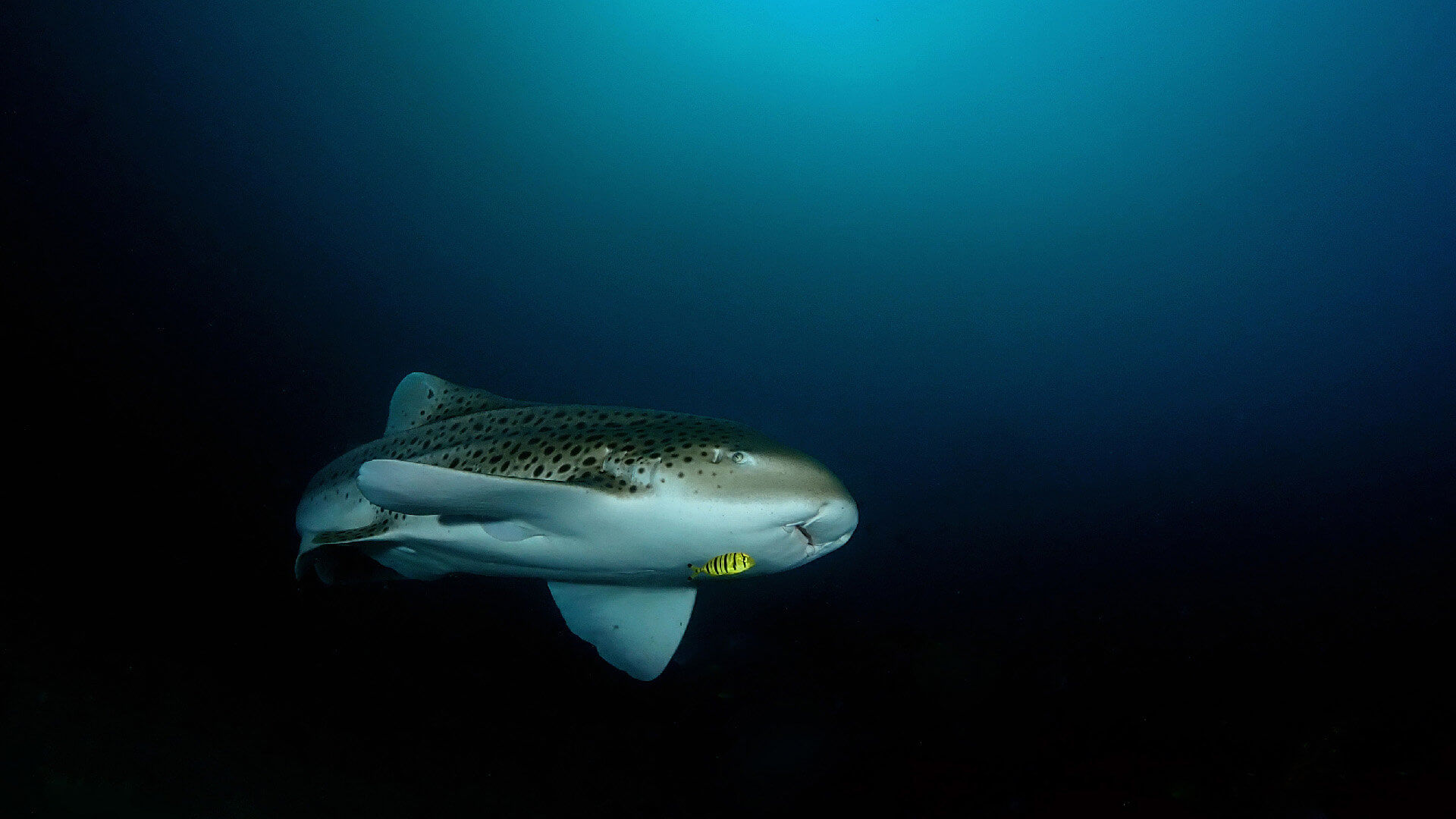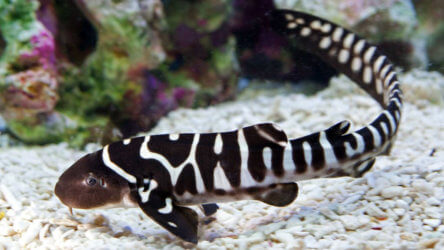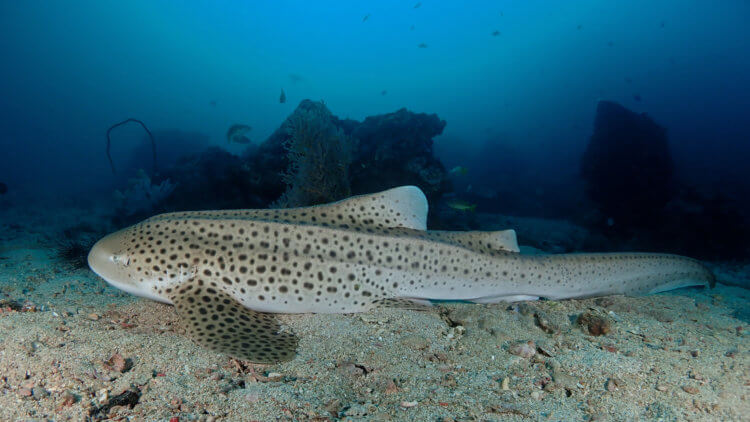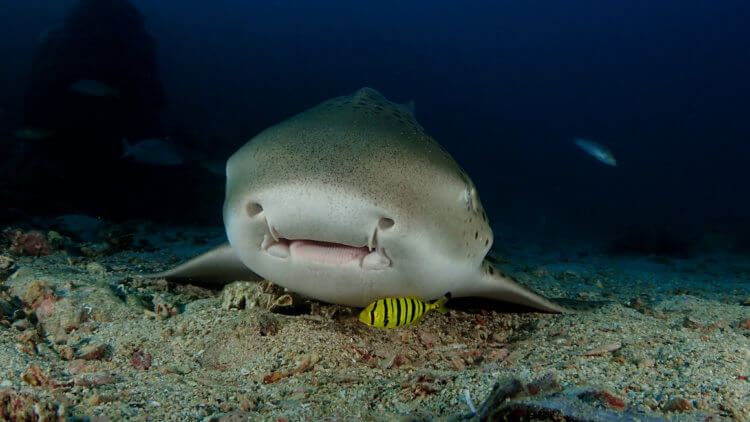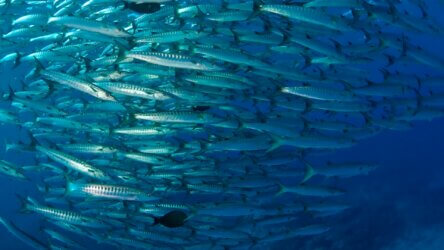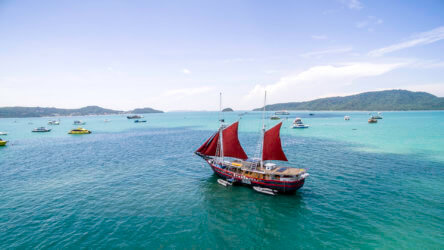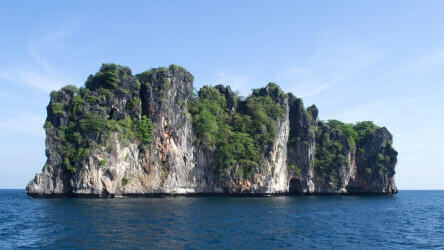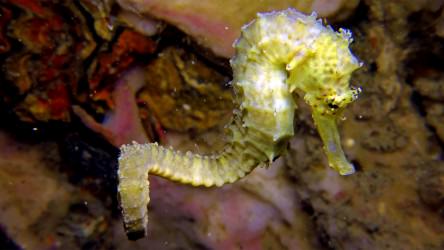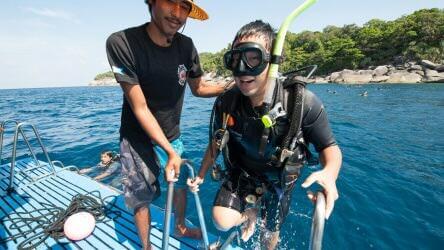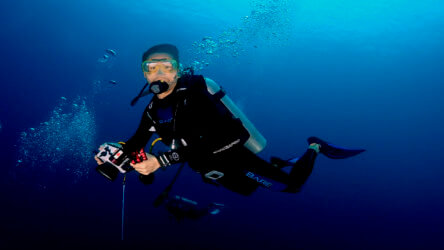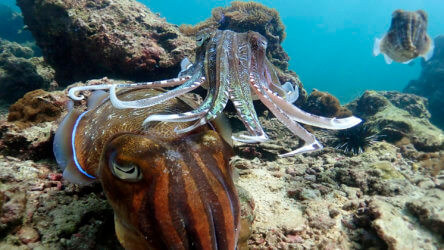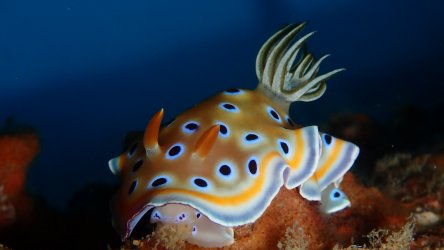Leopard Sharks In Phuket But Zebra Sharks To Others
We call them leopard sharks in Phuket and in south east asia in general but the rest of the world refers to Stegostoma (covered mouth) fasciatum (banded) as zebra sharks. Along the west coast of the US and Mexico, a small hound shark – Triakis semifasciatais is commonly referred to as leopard shark. It must have been named by somebody who’s never seen a leopard, the markings have no real resemblance. We’ll stick to calling them leopards sharks in Phuket.
What’s In A Name
Photo Credit: National Sea Life Center, Birmingham, UK
So why the confusion? Even though the adult Stegostoma fasciatum have very leopard like markings, the juveniles look very different. They were at first considered different species. The leopard sharks pups have bold brown and white zebra like markings that possibly mimic venomous sea snakes. The little guys are less than a foot long when they emerge from their egg cases so they need a little protection. It’s a little unclear where they hang out after hatching, apparently the youngsters have been sighted at 60m+ and around shallow mangroves.
They Don’t Look Like Other Sharks
Leopard sharks are one of a kind, the only shark in the stegostama genus. They do share some features similar to other sharks; ridges like a whale shark, long tail like a thresher and barbels like a nurse shark. This combination along with the markings make for a very unique and beautiful animal. The long tail is especially impressive. If you’re lucky enough to see a leopard shark swimming, the graceful, sinuous movement is an experience you’ll long remember. Leopard sharks can grow up to 3m, half of which is the tail.
Leopard sharks are benthic, which basically means they lounge around on the bottom. Like most of the sharks in the broader carpet shark family they’re tagged under, strong gill and mouth muscles allow them to pump water over their gills so they can rest on the bottom. Leopard sharks are supposed to rest in areas exposed to current to facilitate the movement of oxygen over the gills. We have to say that that the opposite seems true around Phuket, we often find them resting in sheltered areas on our scuba diving sites.
Their habit of resting in shallow areas make them a firm favorite with guides and guests. So it’s quite possible to encounter a leopard shark even on a beginner courses.
What do Leopard Sharks Eat?
Leopard sharks are nocturnal hunters so very few have seen them feeding. Scientists still have many tricks to find out what their diet consists of. Crabs, urchins, molluscs and small fish are all fair game for leopard sharks. The thick skin and and flexible body allow them to push into small cracks and holes in the reef to winkle out snacks.
The strong jaw muscles that surround the small mouth are designed to suck in the prey from the reef or buried under the sand. The small appendages (barbels) either side of the mouth are thought to assist in finding prey in lowlight conditions. Teeth of leopard sharks are small and numerous across plates in the lower and upper jaw, a great adaptation for crushing up their preferred prey of molluscs.
Don’t Need No Man
Back in 2016, a captive female leopard shark in the Reef HQ Aquarium in Townsville laid eggs. Not an unusual event in itself but she had no mate. She’d been living alone for a few years so this came as a bit of a surprise. Scientists thought she may have been storing sperm but DNA tests showed only cells from the female. She had produced pups in the conventional manner before so this was the first observation of a shark switching to asexual reproduction.
We’ll have to wait a long time to see if these pups are capable of breeding themselves. Would be kinda pointless if they can’t…We hope they can, parthenogenesis would be a great tool to have in the locker for this under threat species.
Who’s The Hanger On?
The little yellow fish that appears in some of the photos is a juvenile golden trevally (Gnathandon speciosus). They often use larger fish for protection and feeding opportunities. They can grow to more than 1m in length and 15kg in weight. We quite often see the large, impressive adults hunting the snapper schools on Koh Bida Nok.
Where Are The Leopard Sharks In Phuket?
Shark Point had started to be called Sharkless Point over the last couple of years. We had more whale shark than leopard shark sightings. This year has been spectacularly different. We’ve had much cooler water than normal so we think this is reason they’ve returned to old haunts. Shark Point has has daily sightings, Koh Bida Nok quite a few and even Racha Noi and Racha Yai.
We visit Shark Point four times per week, every Saturday, Monday, Wednesday and Thursday. Our exceptional guides will know exactly where to look and more importantly how to behave around these magnificent sharks. Dive with Local Dive Thailand to give yourself the best chance of an incredible encounter.
Contact Us Now To See Phuket’s Leopard Sharks!
Posted in Rare & Peculiar Critters on .
